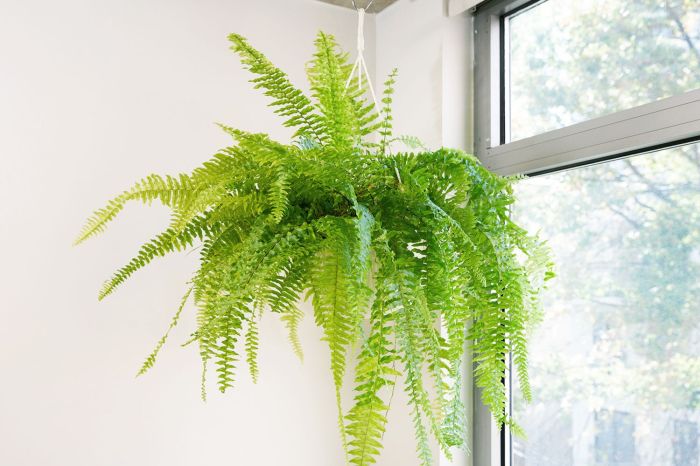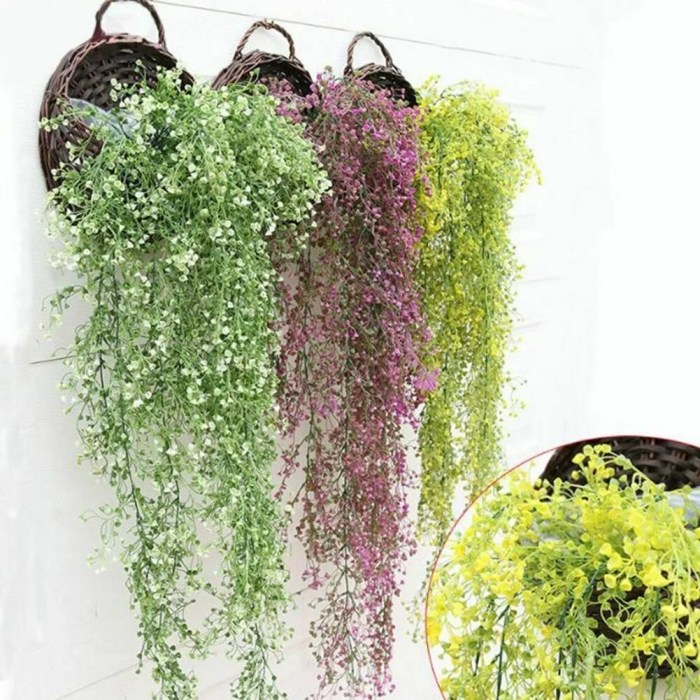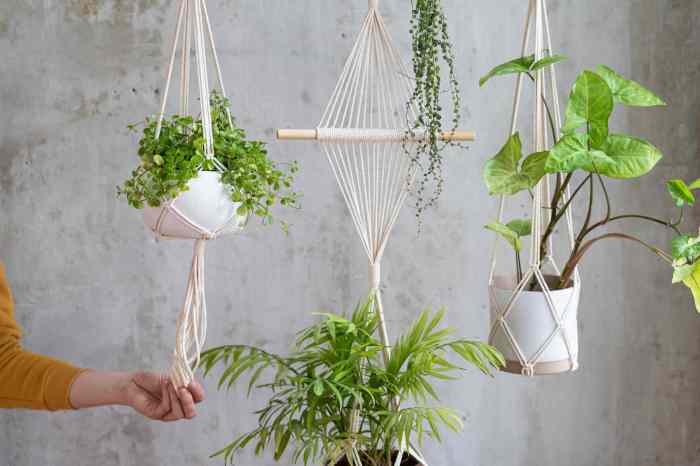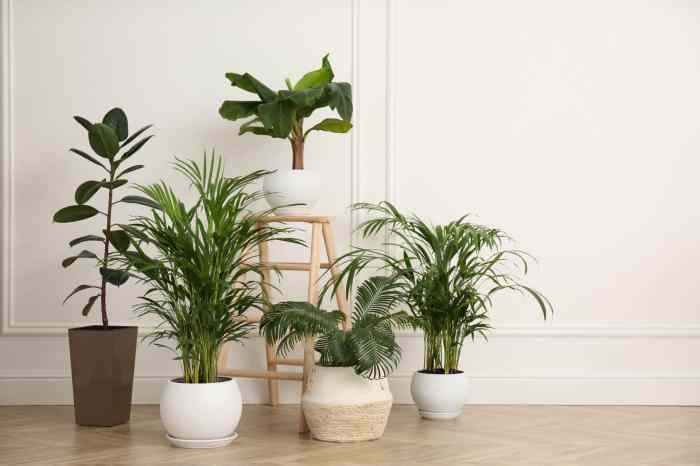Best draping indoor plants are a captivating way to add life and elegance to any living space. From the iconic pothos to the trailing philodendron, these plants offer a cascade of greenery that can transform a room. Their unique growth habits and air-purifying capabilities make them not only visually appealing but also beneficial for your health and well-being.
Whether you’re a seasoned plant enthusiast or just starting your indoor gardening journey, this comprehensive guide will provide you with everything you need to know about best draping indoor plants. From choosing the right species to troubleshooting common issues, we’ll cover all the essentials to help you create a thriving indoor oasis.
Trending Draping Indoor Plant Species

Indoor plant enthusiasts are increasingly embracing the allure of draping plants, which add a touch of elegance and lush greenery to living spaces. These plants cascade beautifully over shelves, tables, and windowsills, creating a captivating ambiance.
Popular Draping Indoor Plant Species
- Pothos (Epipremnum aureum):Known for its heart-shaped leaves in various shades of green, pothos is an easy-care plant that tolerates low light conditions. Its trailing vines can reach lengths of several feet, making it an ideal choice for hanging baskets or tall shelves.
Best draping indoor plants, also known as cascading plants, add a touch of elegance and greenery to any room. These plants, with their long, flowing stems, can be placed in hanging baskets or on high shelves to create a dramatic effect.
Hanging Plants offers a wide variety of these plants, from the popular pothos and philodendron to the more unique string of pearls and spider plant. By incorporating best draping indoor plants into your home décor, you can create a lush and inviting atmosphere.
- Spider Plant (Chlorophytum comosum):With its long, arching leaves and white-striped foliage, the spider plant is a graceful addition to any room. It produces spiderettes, which can be easily propagated to create new plants.
- String of Pearls (Senecio rowleyanus):This unique succulent features delicate, bead-like leaves that cascade like a string of pearls. It prefers bright, indirect light and well-draining soil.
- Burro’s Tail (Sedum morganianum):Similar to the string of pearls, the burro’s tail has plump, fleshy leaves that resemble tiny donkey tails. It requires bright light and occasional watering.
- Peperomia Watermelon (Peperomia argyreia):This low-maintenance plant boasts distinctive watermelon-shaped leaves with silver markings. It prefers indirect light and moderate watering.
Benefits of Draping Indoor Plants

Incorporating draping indoor plants into living spaces offers a multitude of aesthetic, environmental, and psychological benefits. These plants not only enhance the visual appeal of a room but also contribute to improved air quality and overall well-being.
For those seeking to improve indoor air quality and aesthetics, consider draping plants indoors. Among the best draping indoor plants are the Spider Plant, Pothos, and English Ivy. These plants not only add a touch of greenery to your space but also help purify the air.
As mentioned in the article Air Purifying Hanging Plants: Enhancing Indoor Air Quality and Aesthetics , draping plants can effectively remove toxins from the air, creating a healthier indoor environment.
Aesthetic Benefits
- Height and Vertical Interest:Draping plants can add height and visual interest to a room, especially in spaces with high ceilings or large windows. They create a sense of depth and grandeur, drawing the eye upward and making the room feel more spacious.
- Focal Points:Draping plants can serve as focal points, drawing attention to specific areas of a room. They can be placed near furniture, artwork, or architectural features to create a cohesive and visually appealing space.
- Variety and Texture:Draping plants come in a wide variety of shapes, sizes, and textures. This allows for endless possibilities in creating unique and personalized plant displays that complement any décor style.
Air-Purifying Capabilities
Certain draping indoor plants have air-purifying capabilities, removing harmful toxins and pollutants from the air. Studies have shown that plants like the spider plant, snake plant, and peace lily can effectively reduce levels of benzene, formaldehyde, and trichloroethylene, among other volatile organic compounds (VOCs).
Psychological and Emotional Benefits, Best draping indoor plants
Incorporating greenery into living spaces has been linked to a number of psychological and emotional benefits. Studies have shown that plants can reduce stress, improve mood, and boost creativity. They can also provide a sense of calm and tranquility, creating a more inviting and comfortable atmosphere.
Optimal Placement and Care for Draping Indoor Plants
Choosing the right location for your draping indoor plants is crucial for their growth and health. Consider their light requirements and growth habits when selecting a spot. Plants with low light tolerance can thrive in areas with indirect or filtered light, such as north-facing windows or rooms with artificial lighting.
On the other hand, plants that require bright light should be placed near south- or west-facing windows where they can receive ample sunlight. Additionally, pay attention to the plant’s growth habit. Sprawling or trailing plants may require support structures like trellises or hanging baskets to grow vertically, while upright or bushy plants can be placed on shelves or tables.Proper
With their cascading foliage and ability to purify air, best draping indoor plants are an excellent choice for any home. For those seeking a stylish and versatile way to showcase these plants, 8 Inch Hanging Planters: A Versatile Addition to Indoor Décor offers a wide selection of planters that are perfect for creating a lush and inviting atmosphere.
With their durable construction and elegant designs, these hanging planters complement the natural beauty of draping indoor plants, enhancing their aesthetic appeal while providing a practical solution for maximizing space.
watering is essential for the health of your draping indoor plants. Allow the top few inches of soil to dry out between waterings, as overwatering can lead to root rot. Water thoroughly until excess water drains from the drainage holes.
The frequency of watering will vary depending on the plant species, light conditions, and pot size. During the growing season, most plants require watering once or twice a week. Reduce watering during the winter months when growth slows down.Providing essential nutrients is crucial for healthy growth and lush foliage.
Fertilize your draping indoor plants monthly during the growing season with a balanced liquid fertilizer diluted to half strength. Choose a fertilizer specifically designed for indoor plants and follow the instructions on the packaging carefully. Avoid over-fertilizing, as it can damage the roots and burn the leaves.
Creative Display Ideas for Draping Indoor Plants: Best Draping Indoor Plants

Harness the versatility of draping indoor plants with innovative display techniques. Hanging baskets, adorned with cascading greenery, transform ceilings into verdant havens. Trellises offer structural support, guiding vines upwards to create living walls. Macrame hangers add a touch of bohemian charm, suspending plants gracefully in mid-air.
Vertical Gardens and Wall Displays
Create living tapestries by establishing vertical gardens. Mount planters on walls, transforming empty spaces into lush oases. Utilize wire grids or pegboards to attach pots, allowing plants to cascade downwards. Wall-mounted shelves provide a tiered display, showcasing a variety of draping species.
Decorative Containers and Pots
Elevate the visual appeal of draping plants with decorative containers and pots. Choose hanging planters in bold colors or intricate patterns to complement your décor. Opt for terracotta pots with rustic charm or sleek ceramic vessels for a modern touch.
Best draping indoor plants, like pothos and philodendron, can add a touch of elegance to any room. For those looking to elevate their interiors, Elevate Your Interiors with Large Indoor Hanging Pots: A Comprehensive Guide provides valuable insights on choosing and caring for large indoor hanging pots, which can showcase these beautiful plants to their full potential.
By incorporating these tips, you can create a stunning indoor oasis with lush, draping plants that will enhance the ambiance of your space.
Baskets woven from natural materials add a touch of warmth and organic texture.
Troubleshooting Common Issues with Draping Indoor Plants

Draping indoor plants enhance ambiance and purify the air, but they can encounter issues that affect their health and appearance. Understanding these problems and their solutions ensures thriving plants.
Yellowing Leaves
Yellowing leaves indicate nutrient deficiencies or improper watering. Check soil moisture; if dry, water thoroughly. If the soil is moist, consider fertilizing the plant.
Leggy Growth
Leggy growth results from insufficient light. Move the plant to a brighter location or supplement with artificial light. Avoid overwatering, as this can exacerbate legginess.
Pests
Common pests include aphids, mealybugs, and spider mites. Inspect plants regularly and treat infestations promptly with insecticidal soap or neem oil.
Preventive Measures
* Choose healthy plants from reputable nurseries.
- Provide adequate light and water.
- Fertilize regularly during the growing season.
- Check for pests regularly and treat promptly.
- Rotate plants occasionally to prevent light deficiency.
Last Point

Incorporating best draping indoor plants into your home is a rewarding experience that brings both aesthetic beauty and practical benefits. Whether you choose to display them in hanging baskets, on trellises, or in decorative containers, these plants will add a touch of nature and vitality to any space.
With proper care and attention, they will continue to thrive and bring joy for years to come.
Query Resolution
What are the most popular best draping indoor plants?
Some of the most popular best draping indoor plants include pothos, philodendron, spider plant, string of pearls, and wandering jew.
How often should I water best draping indoor plants?
Watering frequency depends on the specific plant species and growing conditions, but a general rule is to water when the top inch of soil feels dry to the touch.
What are some common problems with best draping indoor plants?
Common problems include yellowing leaves, leggy growth, and pests. These issues can often be resolved by adjusting watering practices, providing adequate light, or treating for pests.